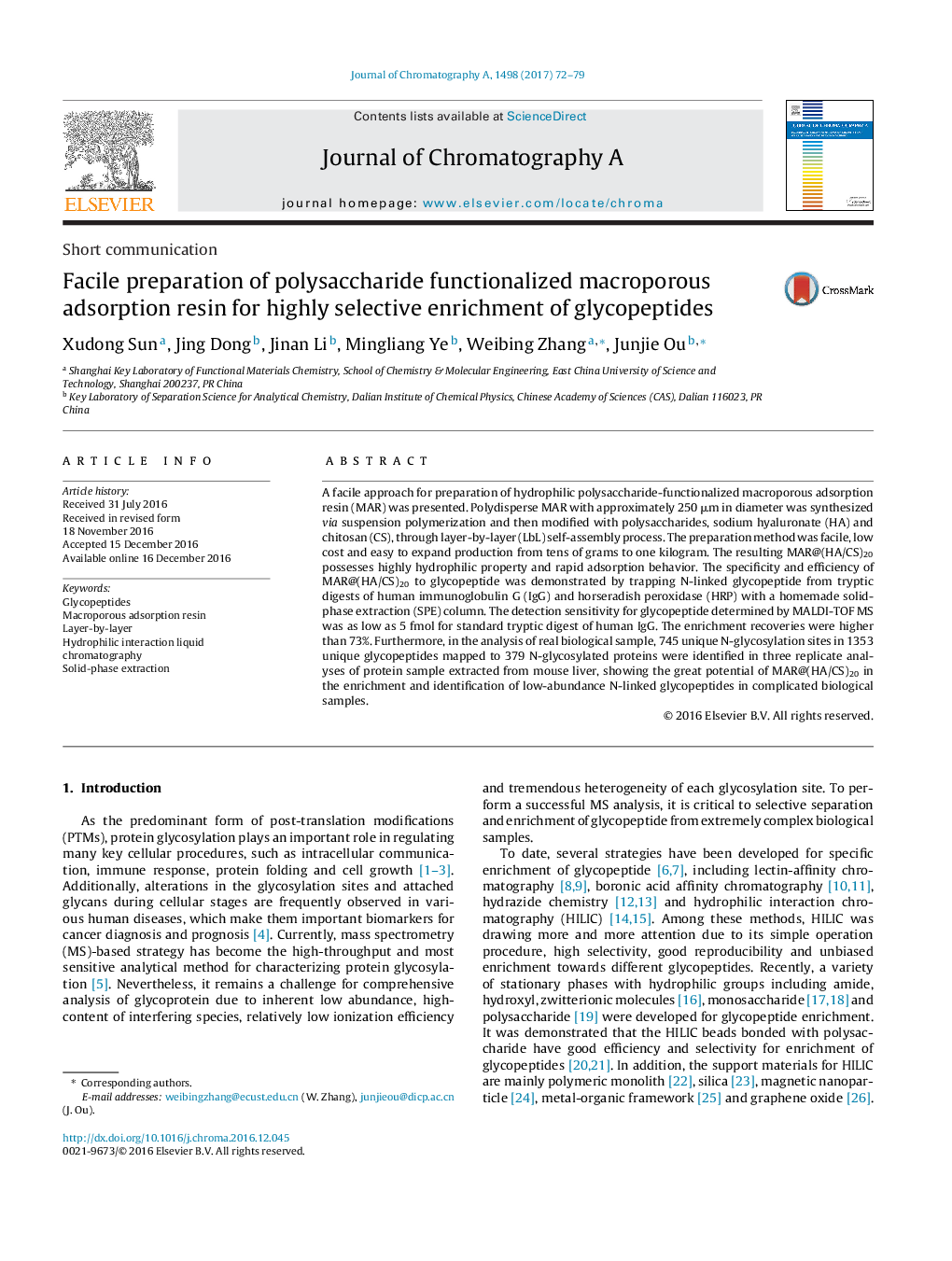| Article ID | Journal | Published Year | Pages | File Type |
|---|---|---|---|---|
| 5135237 | Journal of Chromatography A | 2017 | 8 Pages |
â¢Hydrophilic MAR was modified with polysaccharides through LbL self-assembly methods.â¢The preparation method is facile, low cost and easy to expand production.â¢The resulting hydrophilic MAR exhibited great specificity to low-abundance N-linked glycopeptide.
A facile approach for preparation of hydrophilic polysaccharide-functionalized macroporous adsorption resin (MAR) was presented. Polydisperse MAR with approximately 250 μm in diameter was synthesized via suspension polymerization and then modified with polysaccharides, sodium hyaluronate (HA) and chitosan (CS), through layer-by-layer (LbL) self-assembly process. The preparation method was facile, low cost and easy to expand production from tens of grams to one kilogram. The resulting MAR@(HA/CS)20 possesses highly hydrophilic property and rapid adsorption behavior. The specificity and efficiency of MAR@(HA/CS)20 to glycopeptide was demonstrated by trapping N-linked glycopeptide from tryptic digests of human immunoglobulin G (IgG) and horseradish peroxidase (HRP) with a homemade solid-phase extraction (SPE) column. The detection sensitivity for glycopeptide determined by MALDI-TOF MS was as low as 5 fmol for standard tryptic digest of human IgG. The enrichment recoveries were higher than 73%. Furthermore, in the analysis of real biological sample, 745 unique N-glycosylation sites in 1353 unique glycopeptides mapped to 379 N-glycosylated proteins were identified in three replicate analyses of protein sample extracted from mouse liver, showing the great potential of MAR@(HA/CS)20 in the enrichment and identification of low-abundance N-linked glycopeptides in complicated biological samples.
